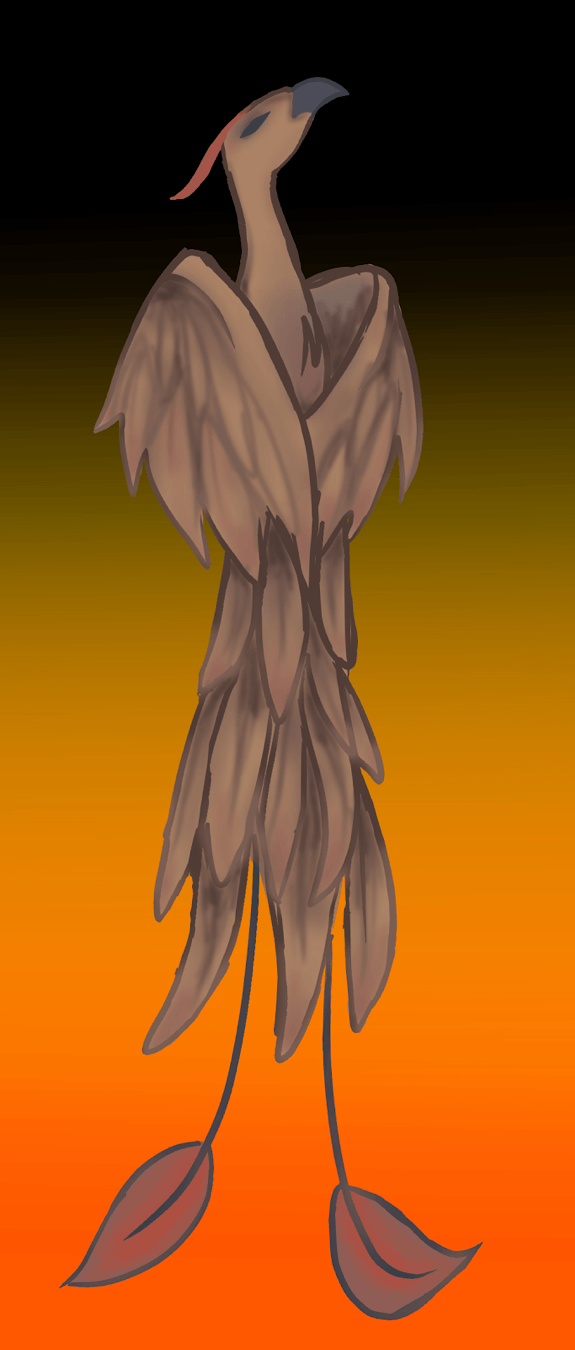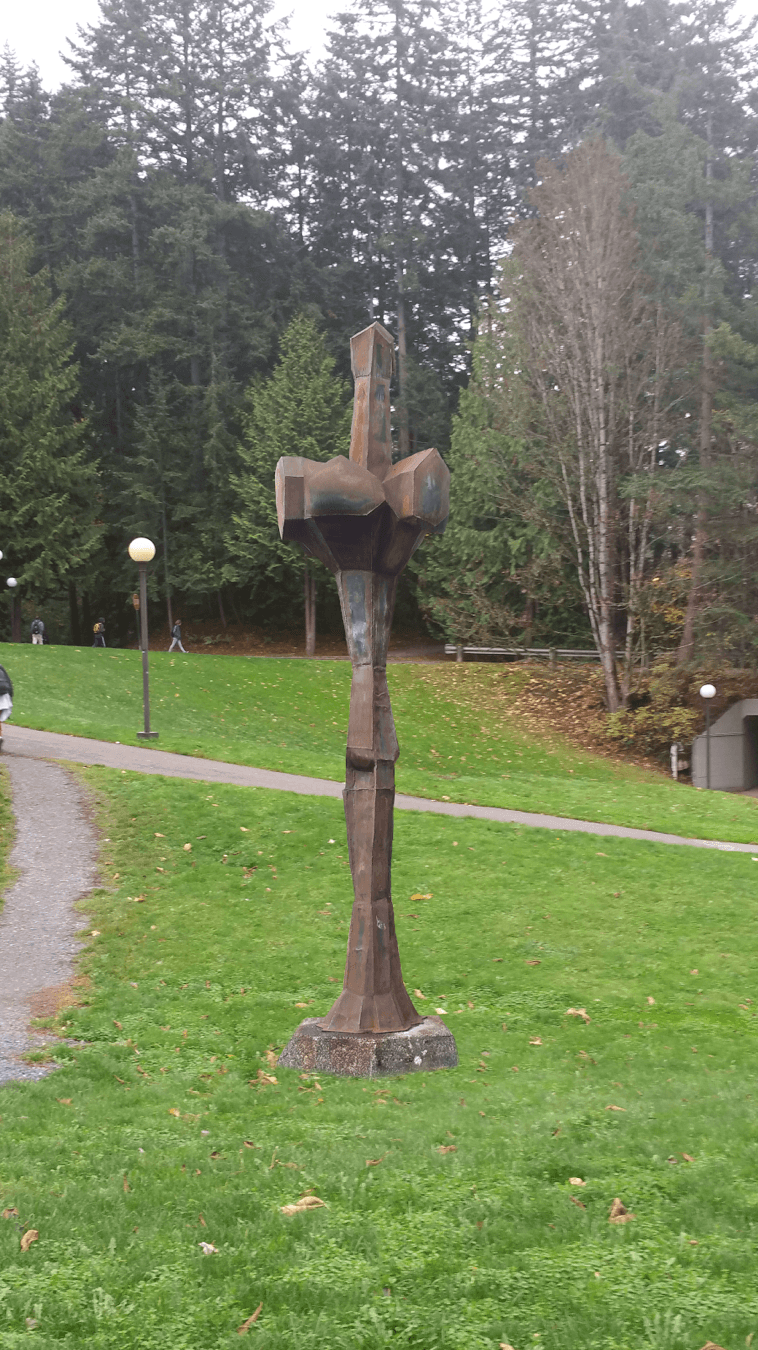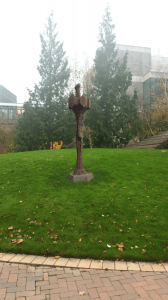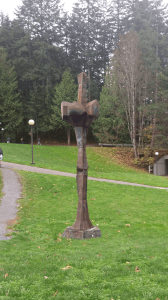Background on the Author
Stephan Walcott Tibbetts was born in 1943. He was still a student here at Western Washington University when he created Scepter (1966). After Scepter was created, the art piece won a student competition and the university bought the artwork from him and placed in Red Square. Scepter is composed of old car parts because Tibbetts valued the importance of recycling and reusing materials. This art piece was created in the time of realizations that reusing materials may benefit the environment and thus, junk art became popular. Besides Scepter, Tibbetts also designed other art pieces that are now located in the Whatcom Museum of History and Art and the Seattle Art Museum.
Scepter was created at a period of time when recycling and reusing objects was brought to attention. This art piece was created during that period of time to promote the movement, which fits very well with the University’s beliefs and Scepter standing there is a constant reminder to students on campus of how important our environment is. On the topic of environment, when this art piece was discussed among students, some expressed some concerns that includes mother nature damaging this art piece because it is located outside with no cover to protect it. However, I don’t see it as a problem, but the artwork seems more complete when nature plays a role. The creator, Tibbetts’ original idea and intend on this art piece was to promote recycling and protect the environment, I think this piece adds a little more flavor when the rain and wind comes and splash some characteristics onto it.
Art in the 60s
By the mid-1960s, avant-garde in the West was not only a paint and canvas, but it was influenced by popular cultures, technology, and media that made diversity of art.
Pop art started with photographic silkscreen series from Warhol that was so simple and effortless, but new. He also convinced people to use sources for an idea of arts instead of making art from a history. The meanings behind pop arts are mostly from what people pay attention to or something well known, so pop arts can easily get the audiences.
A Different Scepter
Since Scepter is located near Fraser Hall in the Red Square, and due to its color and configuration, this piece of artwork may not be easily spotted among students and events that are happening in campus. Therefore, the group has decided to photoshop the art piece onto another scenery hoping to give this piece of artwork more attention and see if other creative imagination may be formed.
The Scepter seems strangely beautiful and tall because of high level of the ground. If it is placed here, people can clearly see it. It looks like a big bird that is going to fly. The light from the sky and the trees make it kind of contrast to where it is placed.
The Scepter can be looked as an old tree because of its appearance and its location. It is clearly seen by a lot of people, but it is not special or different. The outdoor light is located near the scepter making the scepter out of place. It is not looked like a piece of art in this place, and I don’t think people will look at it over 10 seconds.
— Panuwat Deepairojsaku
Scepter by Steve Tibbetts can be seen as many different things from a person to a bird. In this piece, I interpreted the figure as a bird taking flight, similar to the image usually shown of the phoenix. Just as the phoenix rises from the old and expended ashes of its former body, this piece’s form is built of scrap metal, giving what was used and wasted away a new life.
— Olivia van der Toorn
Citations
Project Presented By: Anna Yu, Olivia van der Toorn, and Panuwat Deepairojsaku
Research: Anna Yu
Art History Research: Panuwat Deepairojsaku
Project Explanation: Anna Yu
Interpretations: Panuwat Deepairojsaku
Photoshop: Olivia van der Toorn
Drawing: Olivia van der Toorn
Site Designer: Anna Yu
Art Inventories Catalog-Machinations in the Mode of Senility, (sculpture),
Smithsonian American Institution, 2016.
Clark-Langager, Sarah A. Sculpture in place: a campus as site. Bellingham,
Western Washington University, 2002.
Landell, Lorin. “Western Today.” A Journey of Art: Western’s Outdoor Sculpture
Collection – Western Today.
Pearson, Steve. “1960s Important News and Events, Key Technology Fashion and
Popular Culture.” The People History.
University Public Art Booklet
“Junk Art: Definition and Meaning”. Junk Art: Definition, History






Leave a Reply